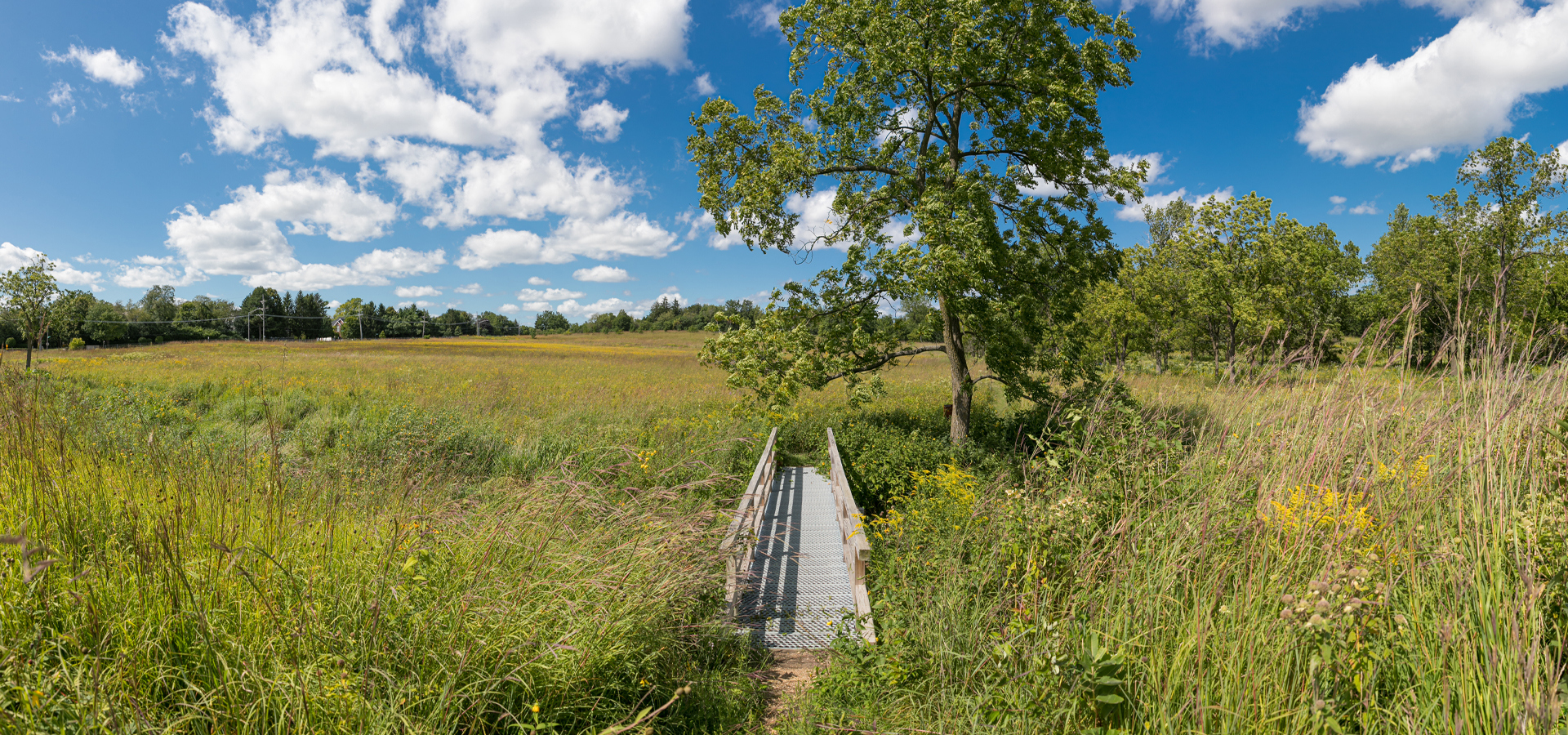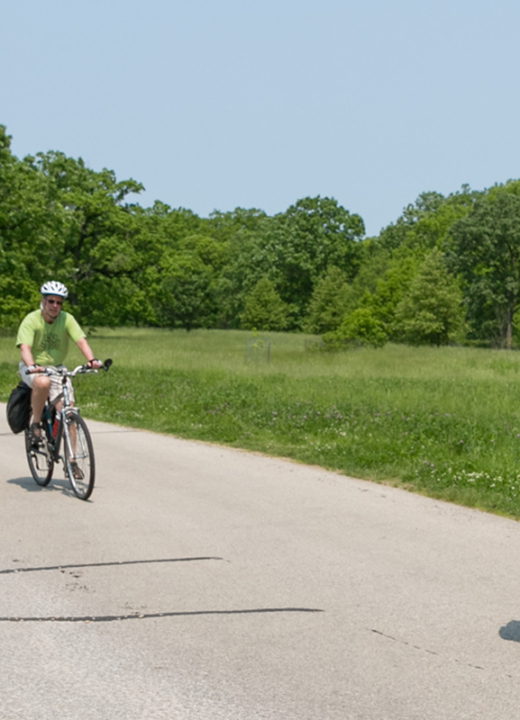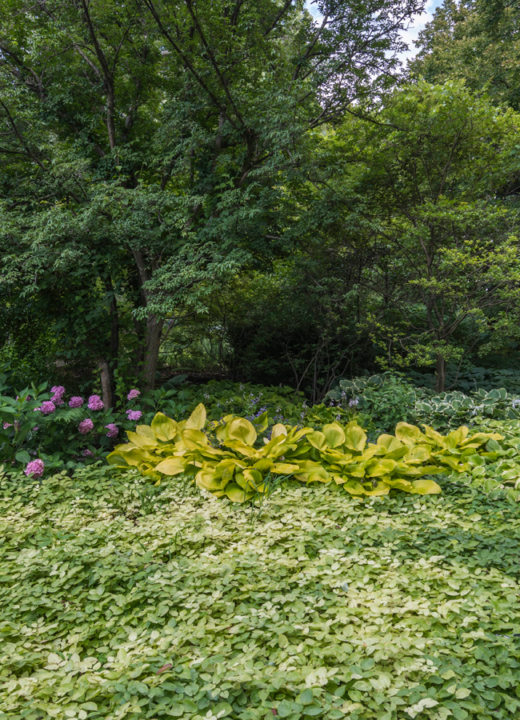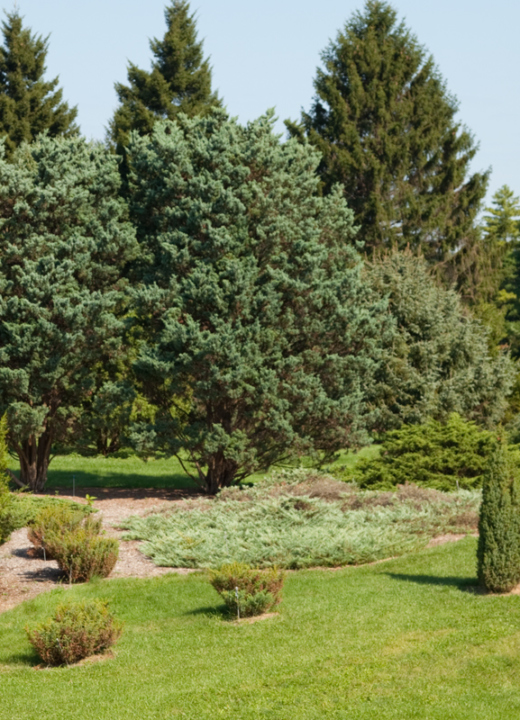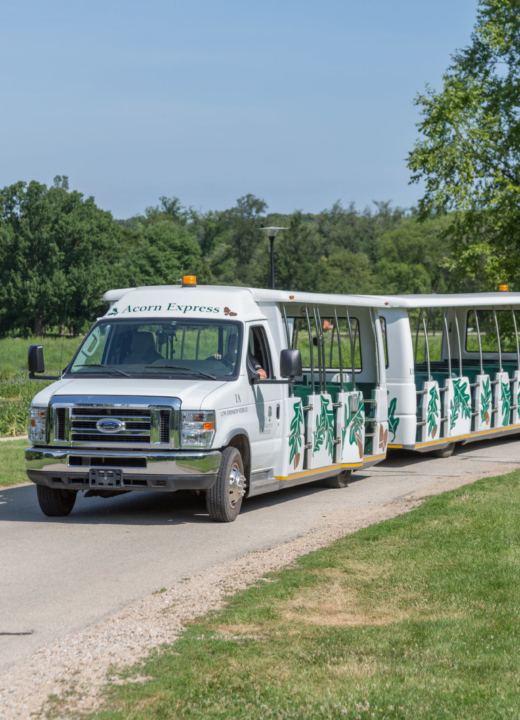The Schulenberg Prairie on the West Side of The Morton Arboretum was one of the first attempts to restore cultivated land to Midwestern prairie.
Begun in 1962, The Schulenberg Prairie now encompasses more than 100 acres of restored tallgrass prairie, savanna, and wetland habitats, and has become an inspiration and model for similar restorations.
Start your visit at the Prairie Visitor Station at Parking Lot 25, which offers shade, enlightening exhibits, and portable restrooms. West Side Main Trail Loops 3 and 4 also connect with the prairie trail loop. A short section of trail to an overlook is paved and accessible, but most trails are unpaved.
When you wander the prairie paths in summer, you’re surrounded by swaying grasses and tall flowers alive with butterflies, bees, and birds.
Like a natural prairie, it is dominated by grasses, such as little bluestem (Schizachyrium scoparius), big bluestem (Andropogon gerardii), prairie dropseed (Sporobolus heterolepis), and Indian grass (Sorghastrum nutans). You also can enjoy many flowers that bloom at different times of the year, such as white false indigo (Baptisia alba), pale purple coneflower (Echinacea pallida), sky blue aster (Symphyotrichum oolentangiense), shooting star (Dodecatheon meadia), and butterfly weed (Asclepias tuberosa). Many animals live in this lush habitat, including abundant butterflies and bees as well as choruses of birds.
The prairie blends into areas of restored savanna—scattered oak trees with prairie between them. Much of the Chicago region was oak savanna before settlement by farmers in the 1830s and 1840s.
It has taken more than 50 years of hard work to create this tapestry of life. The site of the prairie was once a farm field. Before it was plowed, it had been part of the tallgrass prairie that once covered much of the land that would become Illinois, Iowa, Wisconsin, Minnesota, Missouri, Nebraska, and Kansas.
After the Arboretum bought the land in the 1950s, Clarence Godshalk, its director, asked staff member Ray Schulenberg to create a “native planting” on the old cornfield. Schulenberg attempted to replicate the former prairie—one of the first times such a restoration had ever been tried. He based his plans on what he could learn from the few scraps of tallgrass prairie that remained among the Chicago area’s highways and subdivisions.
Schulenberg collected seeds of native grasses and other plants from remnant prairies, railroad rights-of-way and undeveloped lots. The first planting took place in 1963, and over the next few years, staff and volunteers planted not only seeds but more than 80,000 seedlings that Schulenberg and his staff had grown. With few other restorations to guide them, they devised techniques as they went along and used different ones in different areas.
Today, the prairie is regarded as a benchmark in the development of ecological restoration in Illinois. Managing the prairie takes work. Staff and crews of trained volunteers continually remove non-native plants that invade the prairie. It is renewed by regular prescribed burning, which suppresses invasive plants and enriches the soil.
Arboretum scientists have been studying the Schulenberg Prairie since it was planted to understand how it compares to a natural prairie and learn how to improve restoration techniques.
